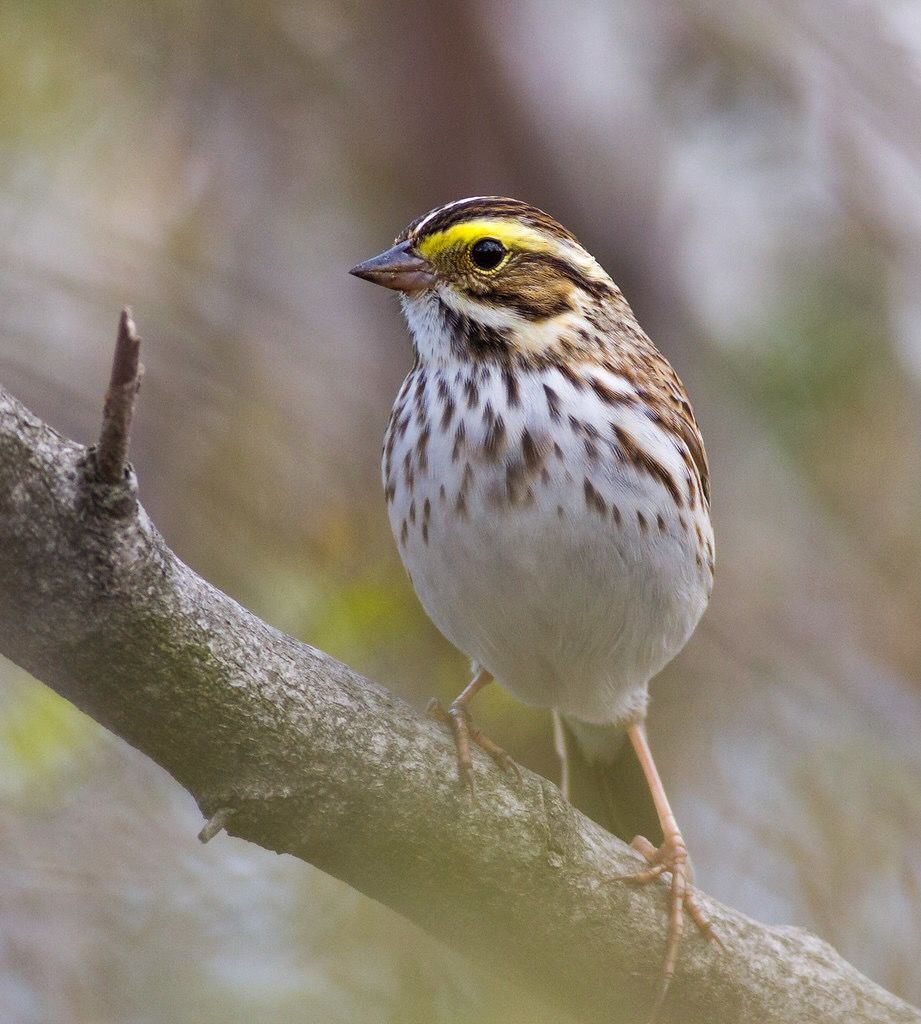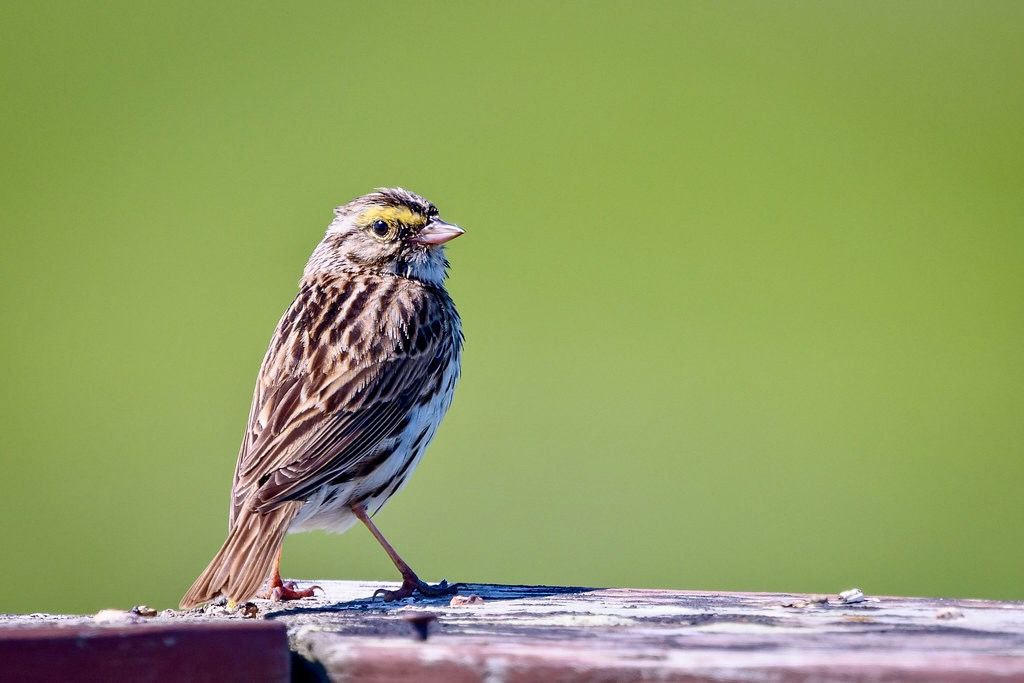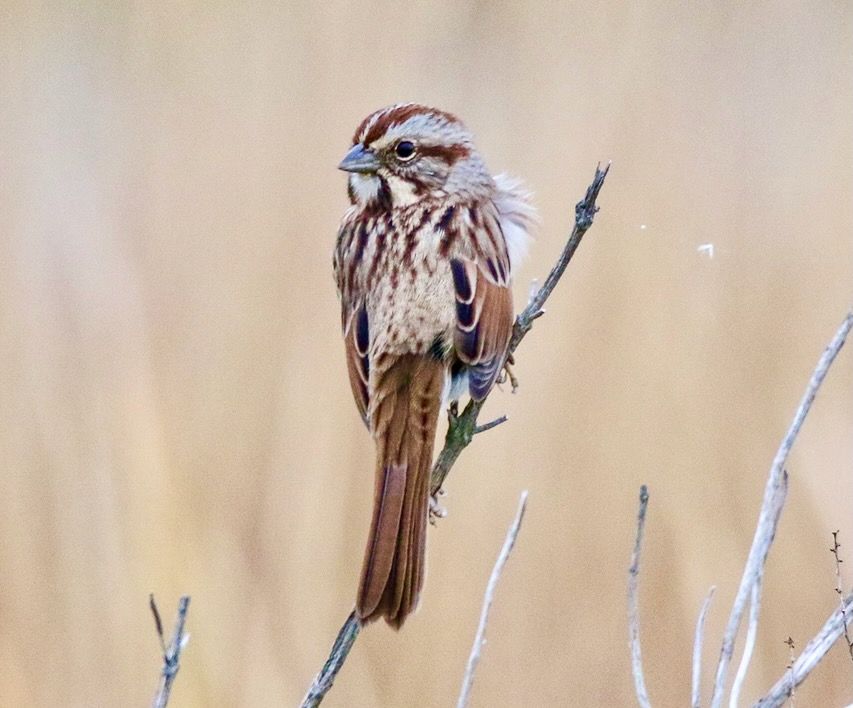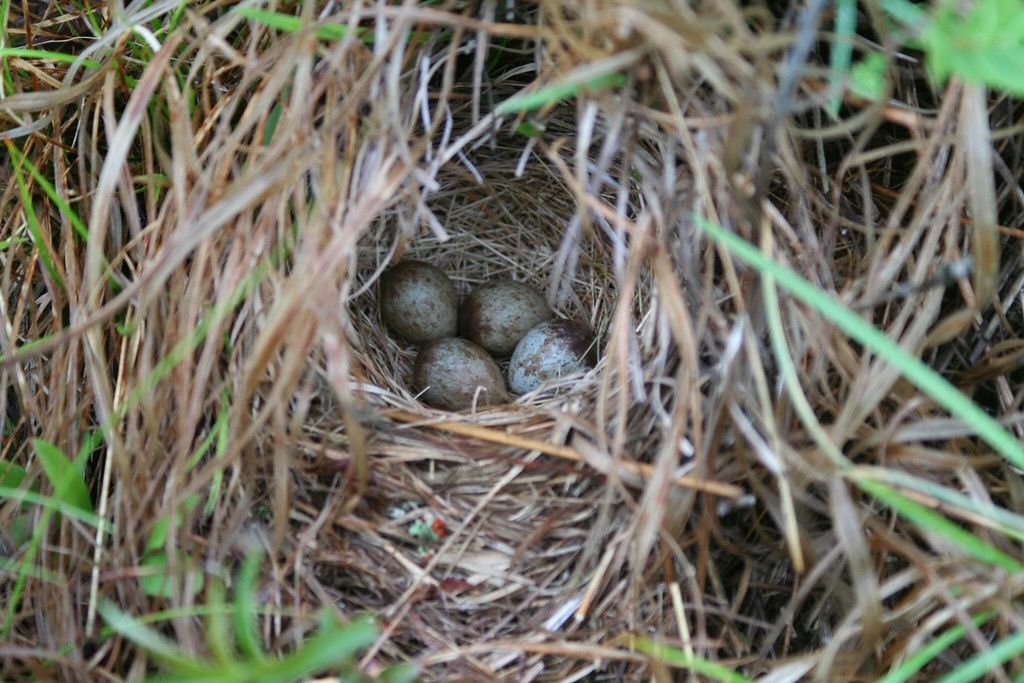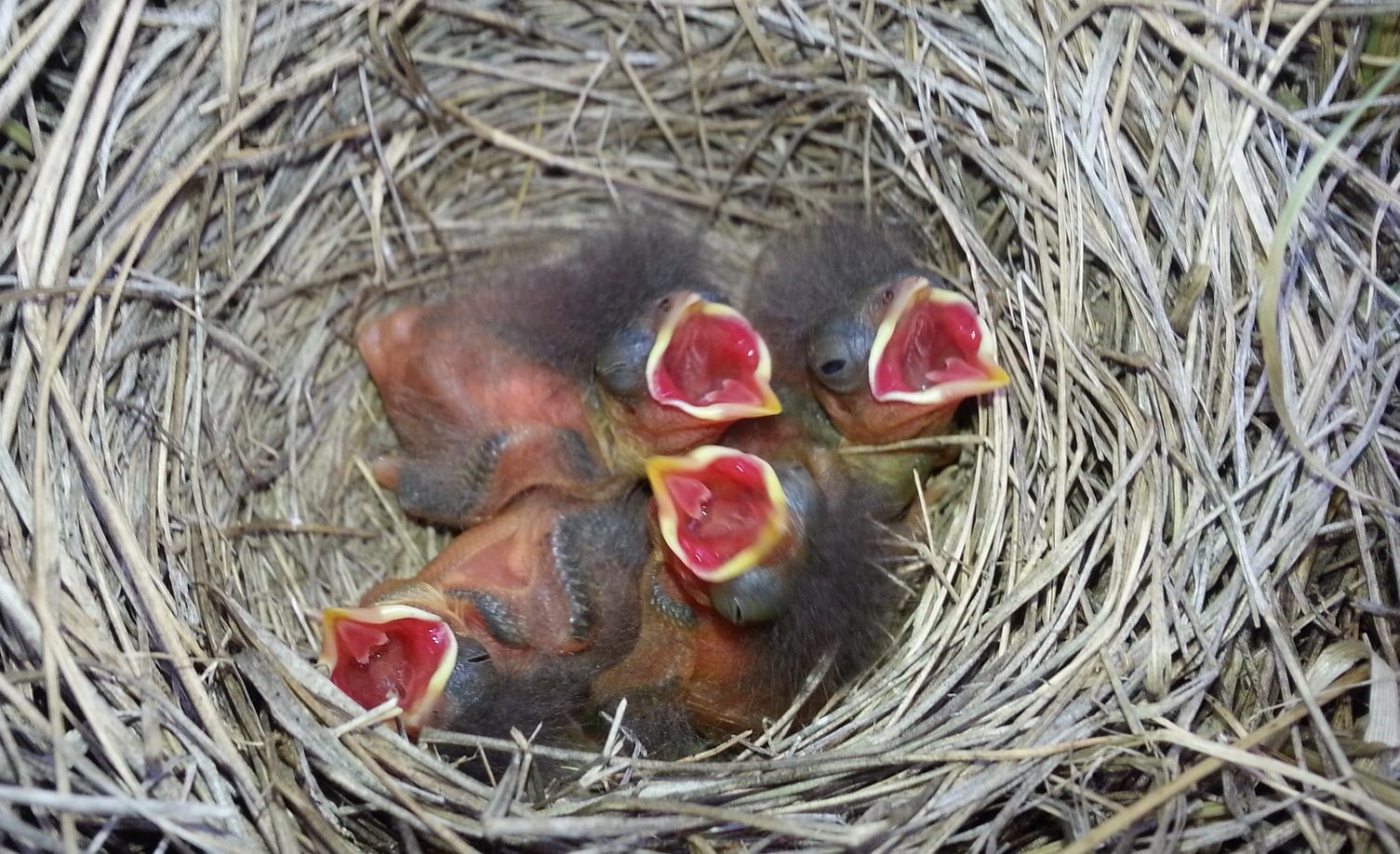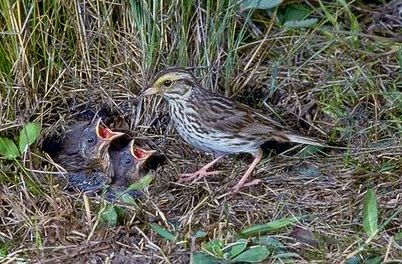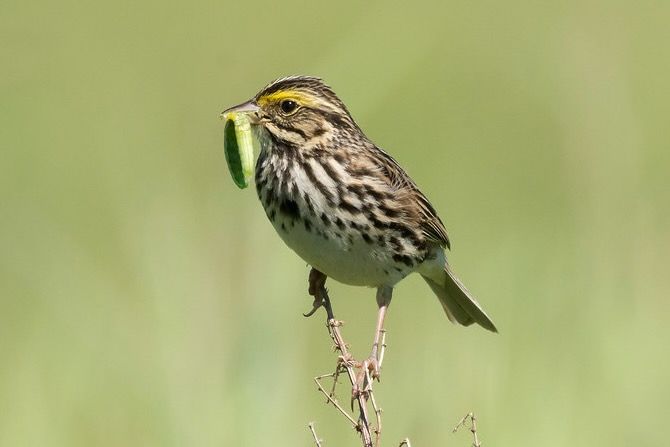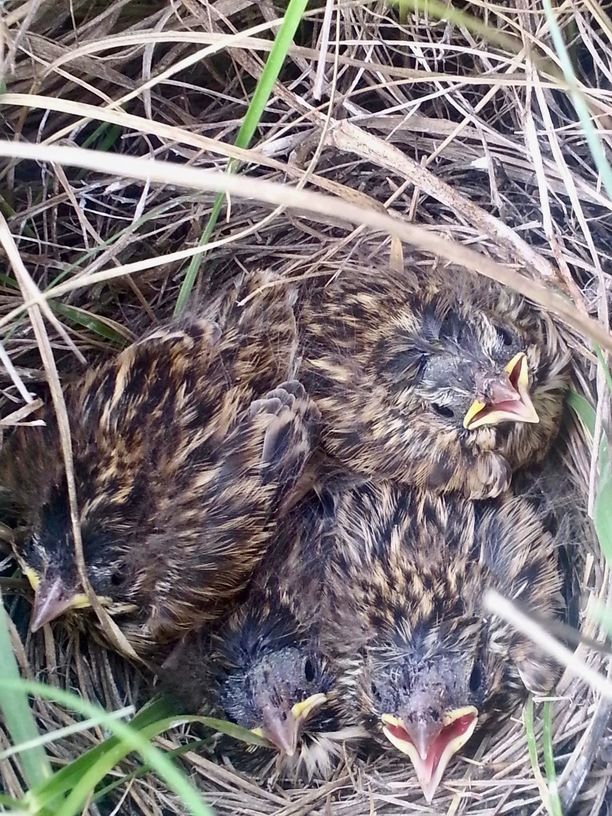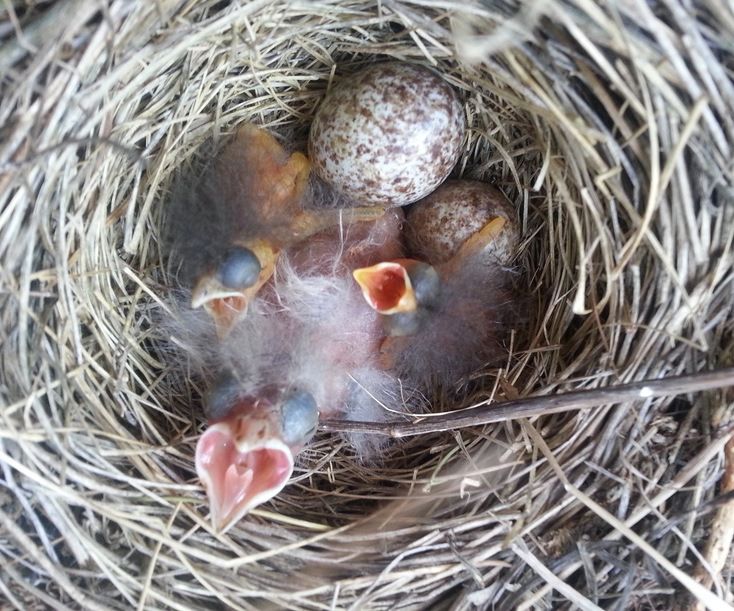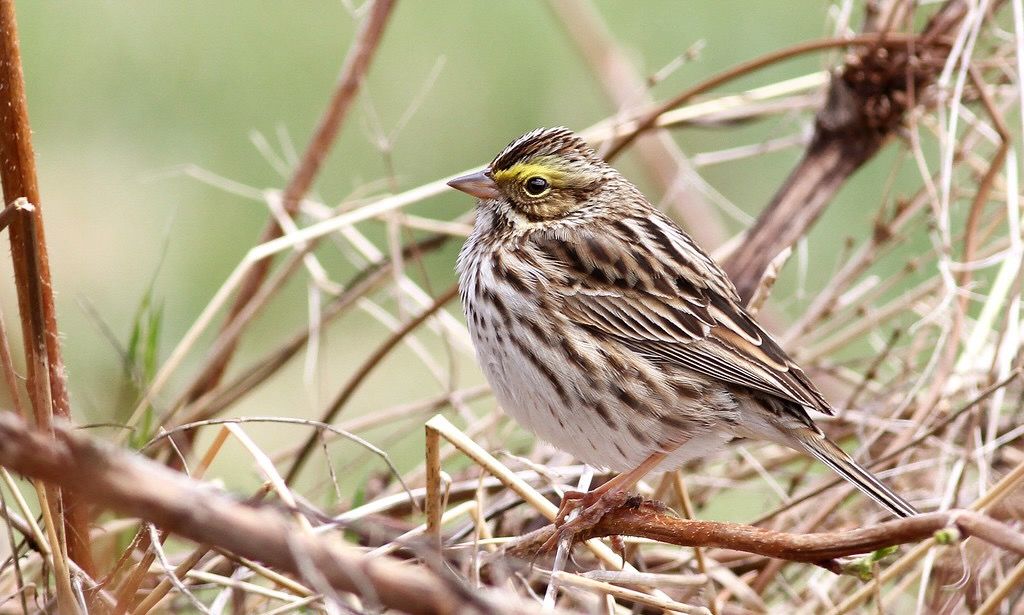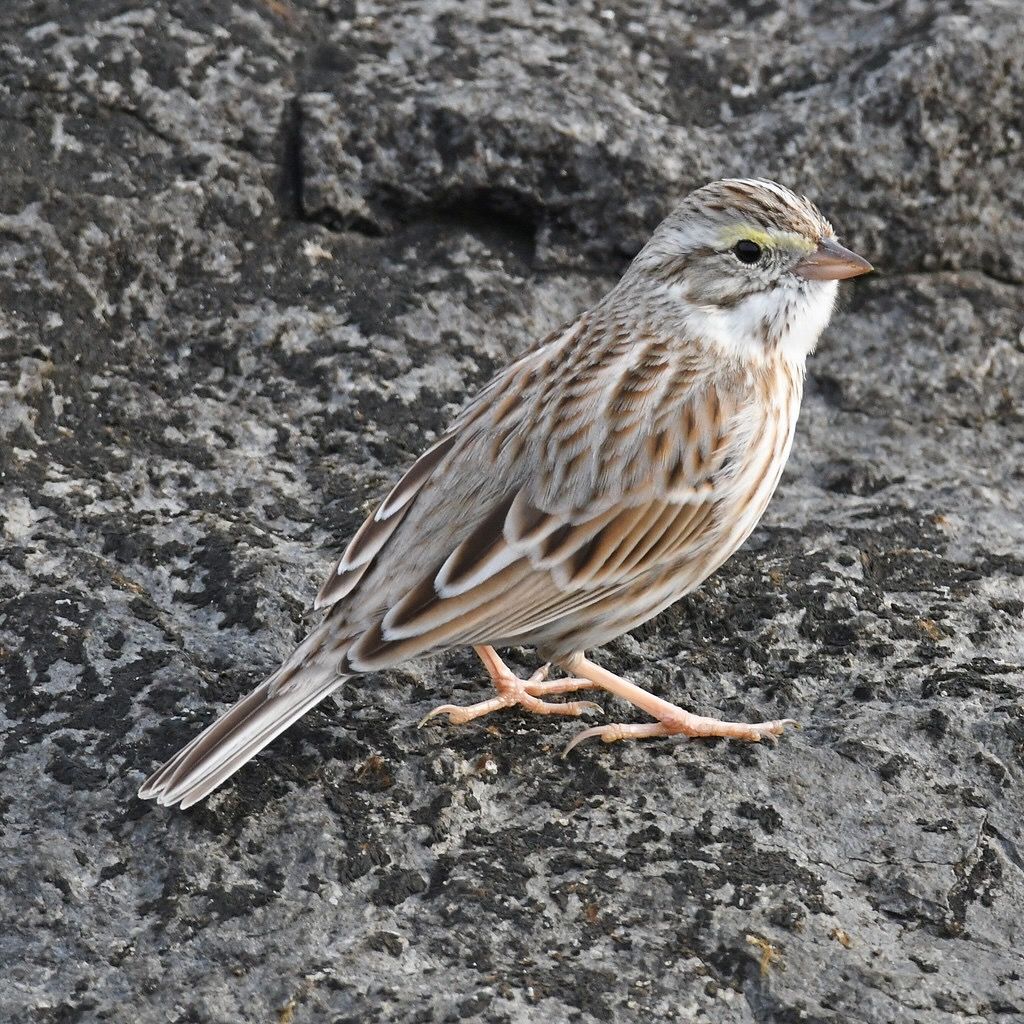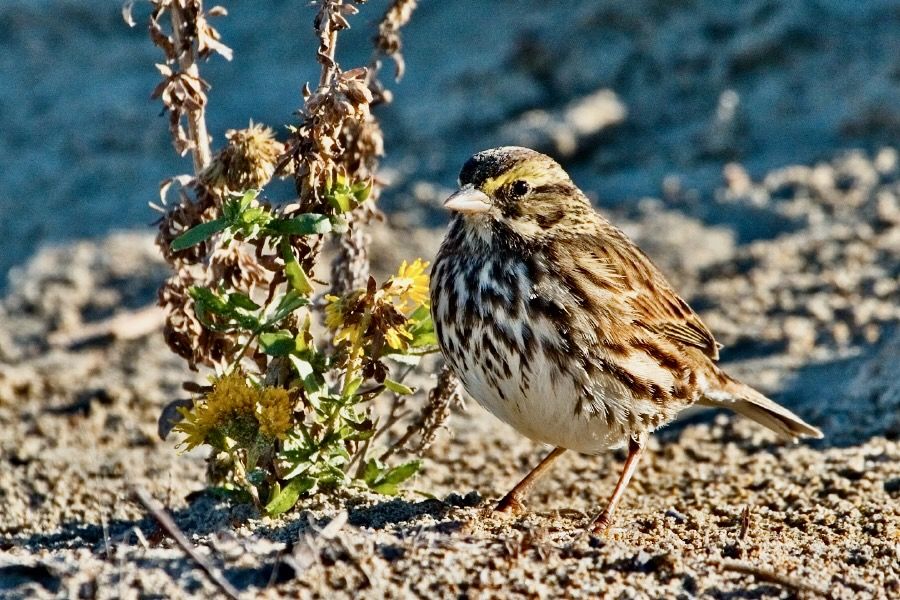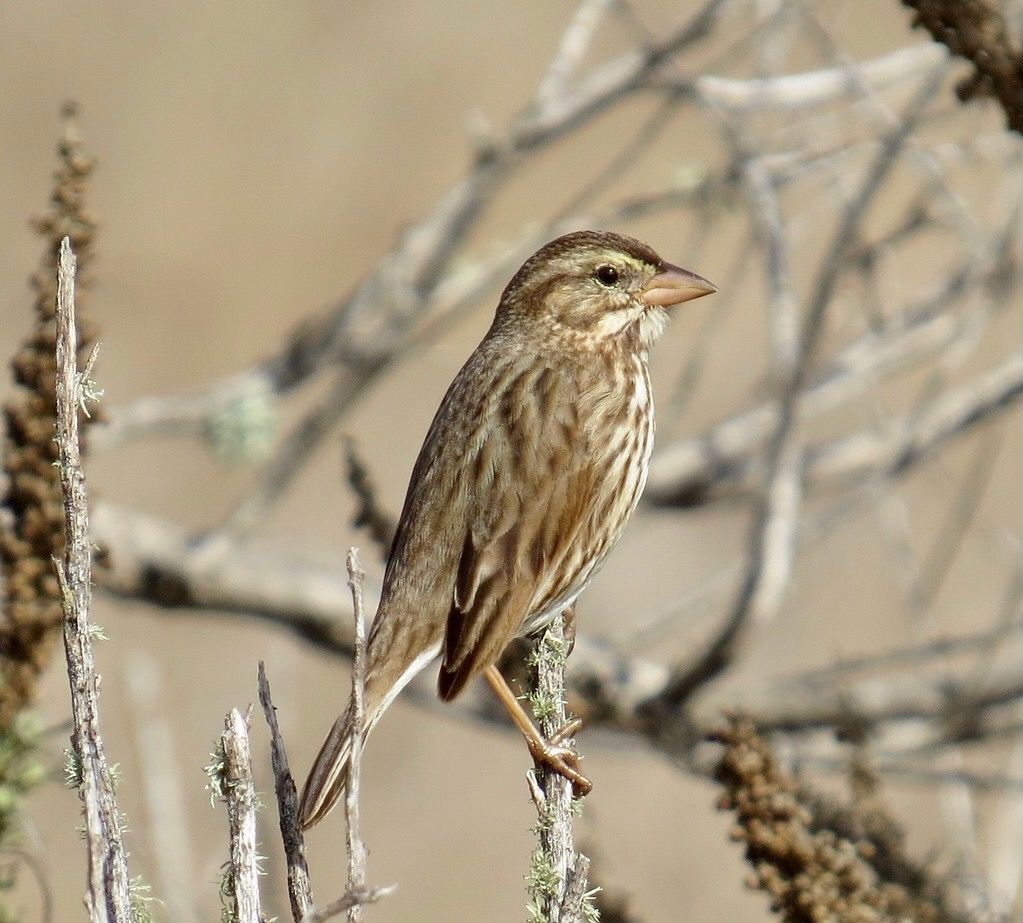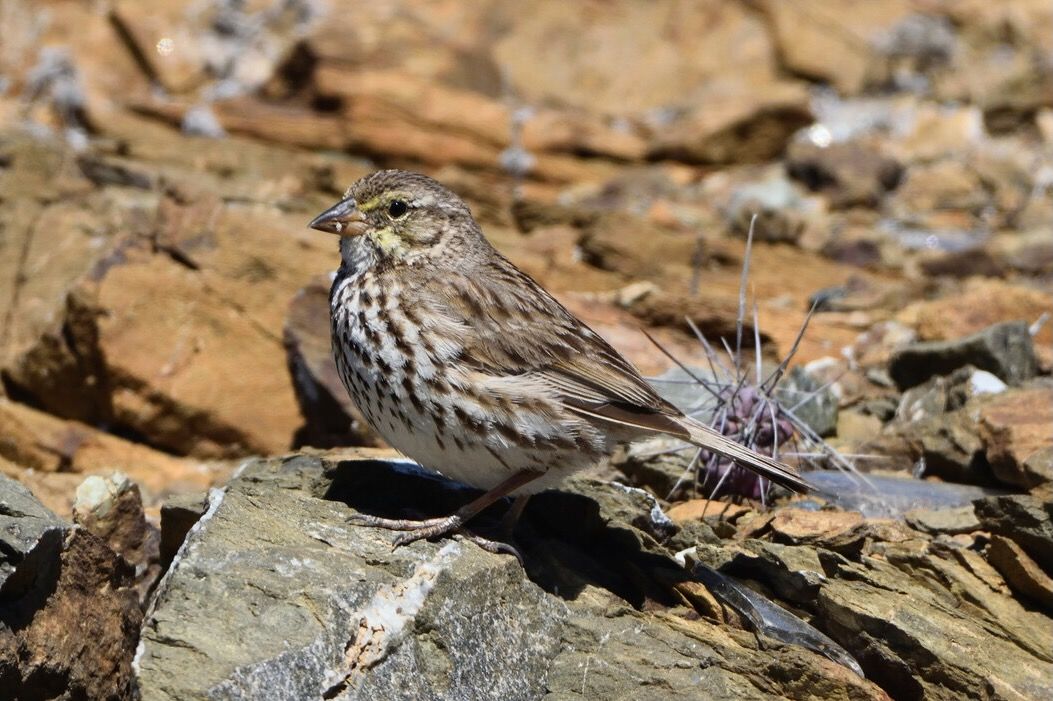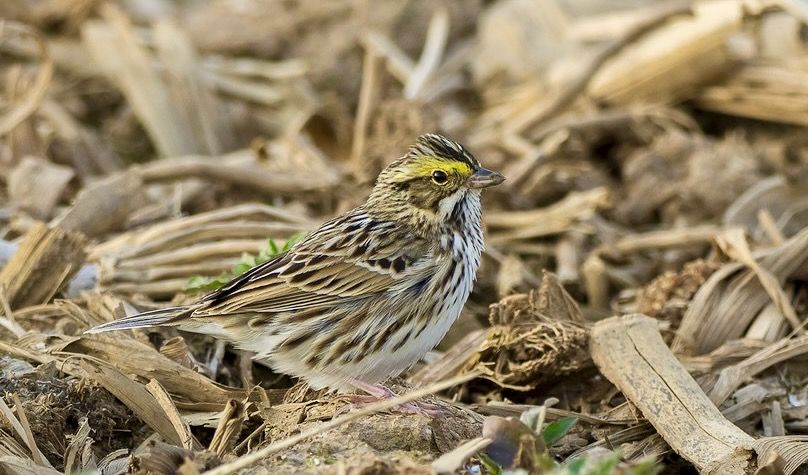Savannah Sparrow
The Savannah Sparrow has only been reported three times at Salter Grove from 2002 through 2024 but is likely to have visited the park more times than that. It prefers open habitat with some cover, so be on the lookout at the edge of lawns in the park.
It belongs to the group of what frustrated birdwatchers would record as "LBJ" (little brown job) for small difficult-to-identify brown birds. If the yellow arc above the eye is not conspicuous it could easily be mistaken as the resident and more common Song Sparrow. Although, if observable side by side, the Savannah Sparrow clearly has a relatively shorter tail and thinner beak than the Song Sparrow.
The Savannah Sparrow breeds in open fields across Canada and northern United States, nesting in a wide variety of habitats including agricultural fields, marshy areas, pastures, sand dunes, salt marshes, and tundra.
It is a ground-nesting grassland specialist that requires extensive grassy areas away from woodland harboring predators. Unfortunately it is unable to escape the brood parasite Brown-headed Cowbird which also favors grasslands. The wintering range of the Savannah Sparrow consists of grassland habitats stretching from the southern United States to northern South America.
It primarily forages on the ground for grains and seeds but consumes a variety of insects and spiders during the breeding season. Coastal populations add tiny crustaceans and mollusks to the seedy diet.
Although widespread in North America, the Savannah Sparrow has declined steadily in Rhode Island and elsewhere since the early 1900's due to the reversion of agricultural fields back to woodland. However, based on data collected between 2015 and 2019, the Second Atlas of Breeding Birds in Rhode Island reports that Savannah Sparrows continue to breed in coastal dune grasslands, on islands in Narragansett Bay, and the grassy areas of airports.
Savannah Sparrows have strong tendencies to return to their hatching sites to breed. This site fidelity has led to a geographic variations in size and plumage color of birds at different locations as populations adapt to local conditions. As many as 17 subspecies have been named based on these differences. However, there is some dispute as to whether different appearing populations are distinct subspecies or simply represent part of a gradient across a large range.
The results of DNA studies have suggested to one researcher that the numerous subspecies should be grouped into four species. Savannah Sparrow proper would encompass the widespread but potentially interbreeding continental populations, with the island-dwelling Ipswich Sparrow in Nova Scotia as a clear subspecies. The remaining three taxa, Gelding's Sparrow, Large-billed Sparrow and the San Benito Sparrow would then represent the geographically isolated and genetically distinct populations found in the salt marshes of Southern California and the San Benito Islands respectively.
For more information:
https://www.allaboutbirds.org/guide/Savannah_Sparrow/
https://www.audubon.org/field-guide/bird/savannah-sparrow
https://en.wikipedia.org/wiki/Savannah_sparrow
https://www.aba.org/birding_archive_files/v42n6p44.pdf Rising J.D. (2010) The many Savannah Sparrows. Birding November 2010: pp. 44-55.
https://www.aba.org/birding_archive_files/v38n5p52.pdf McClaren, I.A. and Horn, A.G. (2006) The Ipswich Sparrow, Past, Present, and Future. Birding September/October 2006: pp. 52-59.
Clarkson, C. E., Osenkowski, J. E., Steen, V. A., Duhaime, R. J., and Paton, W.C. (2023) The Second Atlas of Breeding Birds in Rhode Island. Rhode Island Department of Environmental Management Division of Fish and Wildlife. pp. 338-339.

